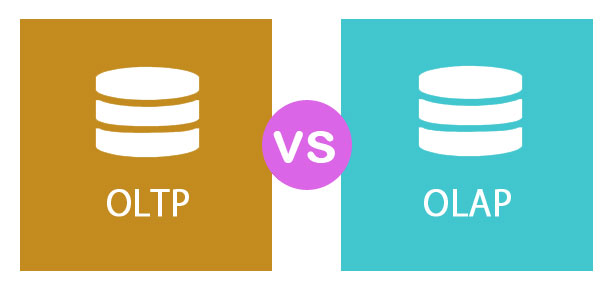DuckDB is an embedded SQL database engine that is designed for OLAP-style workloads. It is designed to be fast, reliable, and easy to use, and it supports a variety of data types and SQL features. In this blog post, we will explore using DuckDB with Golang.
But before going forward, let us understand what do OLAP and embedded database mean.

OLAP Databases
OLAP (Online Analytical Processing) databases are databases designed to support efficient and effective analysis of large, complex datasets. OLAP databases are specifically designed to handle queries that involve multiple dimensions, such as time, geography, product, and customer.
Unlike traditional relational databases, OLAP databases are optimized for data analysis, rather than transaction processing. They typically use a multidimensional data model, which allows users to view data from multiple perspectives or dimensions. For example, a user might want to analyze sales data by region, by product type, and by time period. OLAP databases allow users to easily slice and dice data in this way.
Embedded Databases
An embedded database is a database system that is integrated directly into an application or software package. Unlike traditional database systems, which run as a separate server process and require a separate installation and configuration process, embedded databases are designed to be lightweight, fast, and easy to deploy.
So Duck DB is a database, that is an embedded database that is optimised for Data Analysis.
Let us now try to understand the benefits of Duck DB.
Benefits of DuckDB
- Speed and efficiency :
One of the main reasons for DuckDB’s popularity is its speed and efficiency. DuckDB is designed to be an in-memory database, which means that it can process data quickly and efficiently without the need for disk access. This makes it an excellent choice for applications that require fast query processing and real-time analytics.
- Easy integration with popular programming languages :
Another reason for DuckDB’s popularity is its easy integration with popular programming languages such as Python, R, and SQL. DuckDB provides APIs for these languages, making it easy for developers to integrate it into their applications without having to learn a new query language.
- Low resource usage :
DuckDB is designed to be lightweight, using only a small amount of memory and CPU resources. This makes it an excellent choice for applications that need to run on resource-constrained devices or in environments with limited resources.
- Scalability :
DuckDB is designed to be scalable, allowing it to handle large volumes of data without compromising on performance. It can be used for both small-scale and large-scale data analytics applications, making it a versatile option for a wide range of use cases.
- Open-source and community-driven :
DuckDB is an open-source project, meaning that it is freely available for anyone to use, modify, and distribute. This has helped to build a strong community around the project, with contributors from around the world working to improve the software and add new features.
DuckDB with Golang
We will start by installing DuckDB and then demonstrate how to use it to create a database and query data.
Before we can start using DuckDB with Golang, we need to install the DuckDB C library. This can be done by downloading the appropriate package for your platform from the DuckDB website [https://duckdb.org/]. Once the package is downloaded, follow the installation instructions provided by DuckDB.
Once the DuckDB C library is installed, we can install the Golang bindings for DuckDB. We can do this by running the following command:
go get github.com/duckdb/duckdb-goThis will install the DuckDB Golang package, which we can use to connect to and query a DuckDB database.
Creating a Database and Querying Data
Now that we have installed DuckDB and the Golang bindings, let’s create a database and query data from it.
package main
import (
"database/sql"
"fmt"
_ "github.com/duckdb/duckdb-go"
)
func main() {
// Open a connection to the database
db, err := sql.Open("duckdb", "")
if err != nil {
fmt.Println(err)
return
}
defer db.Close()
// Create a table
_, err = db.Exec("CREATE TABLE users (id INTEGER PRIMARY KEY, name VARCHAR(50), age INTEGER)")
if err != nil {
fmt.Println(err)
return
}
// Insert some data
_, err = db.Exec("INSERT INTO users (id, name, age) VALUES (1, 'Alice', 25), (2, 'Bob', 30), (3, 'Charlie', 35)")
if err != nil {
fmt.Println(err)
return
}
// Query the data
rows, err := db.Query("SELECT * FROM users")
if err != nil {
fmt.Println(err)
return
}
defer rows.Close()
// Print the results
for rows.Next() {
var id int
var name string
var age int
err = rows.Scan(&id, &name, &age)
if err != nil {
fmt.Println(err)
return
}
fmt.Printf("id: %d, name: %s, age: %d\n", id, name, age)
}
}
In this example, we first open a connection to the database using the sql.Open function, which takes two arguments: the driver name ("duckdb") and the data source name (an empty string, as we are using the default data source).
Next, we create a table called users with three columns: id, name, and age. We then insert some data into the table using the db.Exec function.
Finally, we query the data using the db.Query function and loop over the results using the rows.Next method. We extract the values from each row using the rows.Scan method and print them to the console.
In conclusion, DuckDB is becoming increasingly popular due to its speed, efficiency, easy integration with popular programming languages, low resource usage, scalability, and open-source nature. It’s an excellent choice for developers and data scientists who need a fast, efficient, and scalable database management system for their projects.



0 Comments